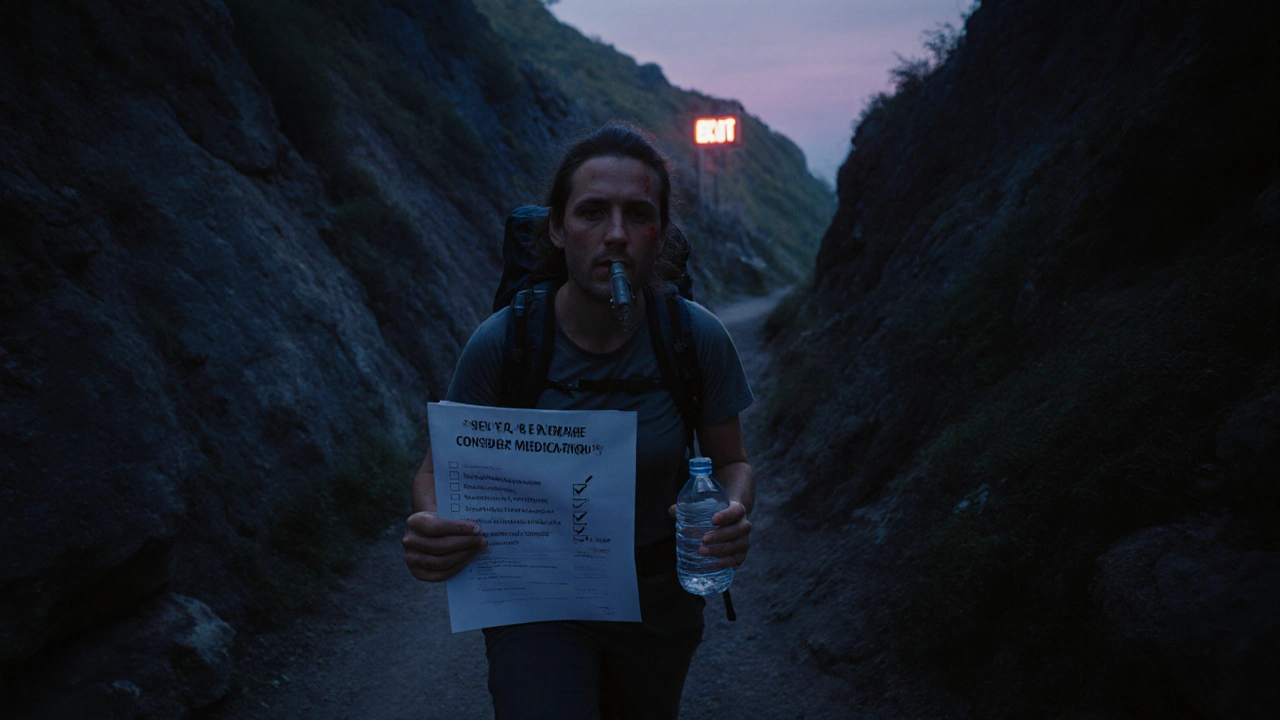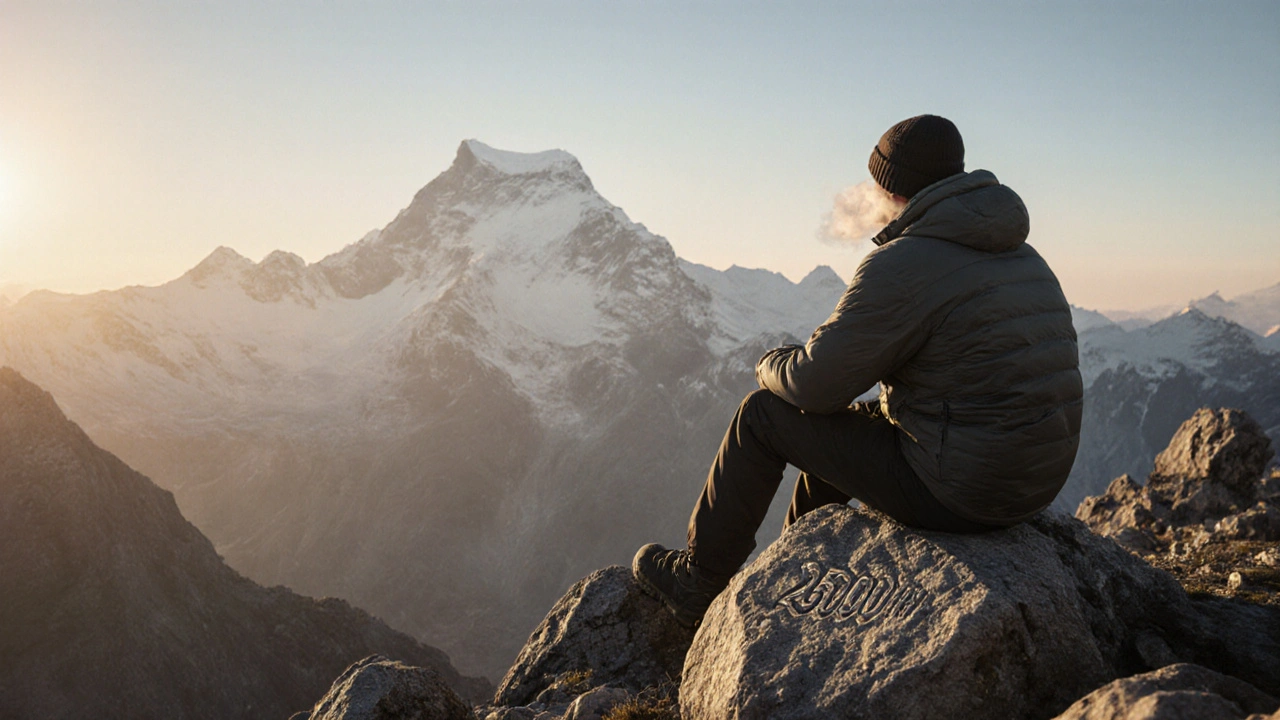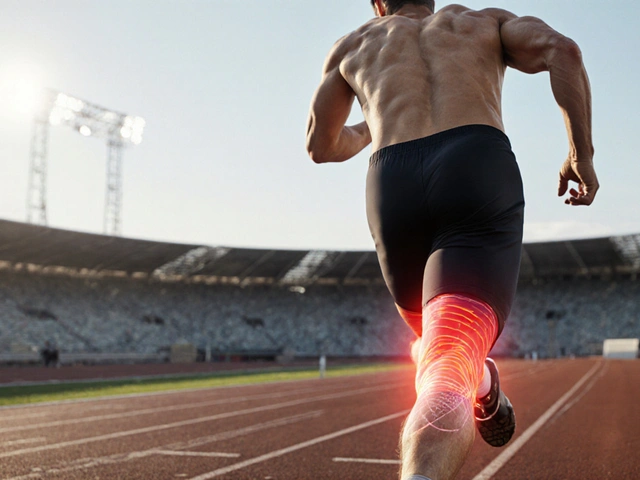Altitude Acclimatization Planner
According to the article, it's recommended to:
- Increase sleeping altitude by no more than 300-500 meters per day above 2,500m
- Include rest days every 3-4 days
- Never exceed 600m elevation gain in a single day
- Stay hydrated with electrolyte-rich fluids
Quick Summary / Key Takeaways
- Ascend slowly and schedule rest days to let your body adjust.
- Stay well‑hydrated and eat a balanced mix of carbs and salts.
- Know the early signs of mountain sickness and act immediately.
- Consider acetazolamide or other meds only after consulting a health professional.
- Use a simple pre‑trip checklist to cover gear, meds, and emergency plans.
What Is Mountain Sickness?
When you hear the term Mountain Sickness is a collection of symptoms caused by rapid exposure to low‑oxygen environments, commonly known as acute mountain sickness (AMS). It usually shows up above 2,500 meters (8,200ft) and can quickly turn into more serious conditions if ignored.
How Altitude Changes Your Body
Altitude isn’t just a number on a map; it’s a change in air pressure that reduces the amount of oxygen you breathe. This drop creates hypoxiaa state where body tissues receive less oxygen than needed, forcing your heart and lungs to work harder.
At 3,000m, the oxygen level is roughly 30% lower than at sea level. Your body reacts by increasing breathing rate, heart rate, and producing more red blood cells over time-a process called acclimatizationthe gradual physiological adaptation to lower oxygen levels. The speed of this adaptation determines whether you feel fine or start battling headaches, nausea, and dizziness.

Core Prevention Strategies
There’s no magic pill that guarantees safety, but a combination of smart habits dramatically cuts the risk.
1. Gradual Acclimatization
The golden rule is “climb high, sleep low.” Aim to increase your sleeping altitude by no more than 300-500m per day once you’re above 2,500m, and schedule a full rest day every 3-4 days. This slower ascent lets your body trigger the acclimatization mechanisms without overwhelming it.
2. Hydration and Nutrition
Water is your best friend up high. Dehydration thickens your blood, making oxygen transport even harder. Drink at least 3-4L of fluid daily, favoring electrolytes‑rich drinks to replace salts lost through increased breathing. Carbohydrate‑dense meals (like pasta, rice, or energy bars) provide quickly usable energy, sparing your body from breaking down muscle for fuel.
3. Pace Yourself
Maintain a comfortable walking speed-usually 2-4km/h on moderate terrain. Short, frequent breaks keep your breathing steady and give your body micro‑adjustments to the thin air. Avoid rushing to the summit on your first day; it’s a fast track to symptoms.
4. Medications (When Appropriate)
Acetazolamidea carbonic anhydrase inhibitor that speeds up acclimatization by causing mild metabolic acidosis is the most widely used prophylactic drug. Typical dosage is 125mg twice daily, started 24hours before ascent. Only use it after a medical review, as it can interact with other meds and isn’t suitable for everyone.
5. Supplemental Oxygen
If you’re climbing above 4,500m, portable oxygen can be a lifesaver. Even a short “oxygen boost” (2-3minutes at 2L/min) can raise oxygen saturationthe percentage of hemoglobin carrying oxygen in the blood by 5-10%, easing symptoms enough to descend safely.
Early Symptoms You Shouldn't Ignore
- Headache that doesn’t improve with over‑the‑counter painkillers
- Nausea or loss of appetite
- Fatigue or difficulty sleeping
- Dizziness or light‑headedness
- Shortness of breath at rest
If two or more of these appear within 24hours of a rapid ascent, it’s time to act.
Step‑by‑Step Response Plan
- Stop ascending. Stay at your current altitude and rest.
- Hydrate. Drink 500ml of water or an electrolyte solution.
- Take medication. If you’ve been prescribed acetazolamide, follow the dosage schedule.
- Descend if symptoms worsen. A 300-500m descent often alleviates AMS quickly.
- Seek medical help. Severe headaches, confusion, or inability to walk may indicate high‑altitude cerebral edema (HACE)a life‑threatening brain swelling caused by extreme hypoxia or high‑altitude pulmonary edema (HAPE)fluid accumulation in the lungs that blocks oxygen exchange. Immediate descent and professional care are mandatory.

Special Situations
Children, seniors, and people with pre‑existing heart or lung conditions need extra caution. Their bodies may adapt more slowly, so plan for lower daily altitude gains (150-300m) and bring a doctor’s note for any medication.
Pre‑Trip Checklist
- ✔ Verify the highest altitude on your route.
- ✔ Plan ascent schedule with rest days.
- ✔ Pack enough water, electrolyte packets, and high‑carb snacks.
- ✔ Include a basic medical kit: acetazolamide (if prescribed), ibuprofen, anti‑nausea pills.
- ✔ Test portable oxygen device (if using).
- ✔ Review emergency descent routes and nearest medical facilities.
Comparison of Common Prevention Options
| Method | Effectiveness | Cost | Ease of Use |
|---|---|---|---|
| Gradual Acclimatization | High | Low (time investment) | Very Easy |
| Hydration & Nutrition | Medium‑High | Low | Easy |
| Acetazolamide (prescribed) | Medium | Medium (prescription cost) | Moderate (needs medical clearance) |
| Portable Oxygen | High (for severe cases) | High (equipment rental/purchase) | Moderate (requires training) |
Frequently Asked Questions
Can I prevent mountain sickness without medication?
Yes. Most travelers avoid AMS by climbing slowly, staying hydrated, eating enough carbs, and taking regular rest days. Medication is an extra safety net for rapid climbs or high‑risk individuals.
How long does it take to acclimatize?
Acclimatization varies, but most people notice improved tolerance after 2‑3 days at a given altitude. Full adaptation to 4,000m can take 1‑2 weeks.
Is it safe to use alcohol at high altitude?
Alcohol worsens dehydration and impairs breathing, increasing AMS risk. It’s best to limit or avoid alcohol until you’ve descended to lower elevations.
What are the first signs of HAPE and HACE?
HAPE often starts with a cough, frothy sputum, and a feeling of breathlessness at rest. HACE presents with severe headache, confusion, loss of coordination, and possibly vomiting. Both require immediate descent and medical attention.
Should children take acetazolamide?
A pediatric doctor can prescribe it, but dosage is weight‑based and side‑effects are more common. Often, a slower ascent and vigilant hydration are safer first steps for kids.






Abhishek Vernekar
13 October 2025 - 18:17 PM
Thanks for putting together such a thorough guide; it really captures the complexity of high‑altitude travel. I especially appreciate the clear breakdown of daily altitude gains – those numbers make planning feel much less intimidating. Staying hydrated and pacing oneself are simple yet often overlooked tips, and your emphasis on them is spot‑on. The interactive planner is a brilliant idea; users can visualize progress and avoid the common mistake of rapid ascent. Keep up the great work, and safe climbs to everyone!
Camille Ramsey
14 October 2025 - 22:04 PM
THIS ISN'T SOME FLOPPY RECIPE FOR CAMPING, IT'S A LIFE‑OR‑DEATH GUIDE – IF YOU DONT LISTEN YOU'RE JUST ASKING FOR AMS. Stop ignoring the 300‑500m rule, it’s not a suggestion, it’s a command!
Raghav Narayan
16 October 2025 - 01:50 AM
Acclimatization, when viewed through the lens of human physiology, represents a cascade of adaptive mechanisms that unfold over days rather than hours. The first response is an increase in ventilation, a hyperventilatory drive triggered by peripheral chemoreceptors sensing reduced arterial oxygen tension. Within a few hours, the respiratory centers adjust the breathing pattern, thereby raising arterial oxygen saturation marginally. In the subsequent 24‑48 hours, renal compensation begins, leading to a mild metabolic acidosis that further stimulates ventilation. By the third day, erythropoietin production in the kidneys escalates, prompting the bone marrow to generate additional red blood cells, which enhances the oxygen‑carrying capacity of the blood. This hematologic adaptation, however, is gradual and can take several weeks to culminate in a significant increase in hemoglobin concentration. Meanwhile, mitochondrial efficiency improves, allowing tissues to extract oxygen more effectively despite the reduced partial pressure. The interplay of these processes underscores why the “climb high, sleep low” principle is physiologically sound; it offers the body intermittent exposure to higher altitude while providing recovery at lower elevations. Hydration plays a pivotal role throughout this period, as plasma volume contraction can exacerbate hypoxia by diminishing cardiac output. Electrolyte balance, particularly sodium and potassium, safeguards both neuronal function and muscular performance in the thin air. Nutritional strategies that emphasize carbohydrate intake support the heightened glycolytic flux demanded by exertion at altitude, sparing protein catabolism. It is also advisable to monitor heart rate and sleep quality, as disturbances in either can herald the onset of acute mountain sickness before overt symptoms manifest. In practice, a staggered itinerary that incorporates a rest day after every three ascent days aligns with the body’s intrinsic adaptation timetable. Should any individual experience persistent headache, nausea, or dizziness, the prudent response is to halt further ascent and, if necessary, descend 300‑500 meters to alleviate hypoxic stress. Pharmacologic adjuncts such as acetazolamide can be considered, but only after a thorough medical evaluation, given their potential side effects. Finally, it is essential to carry a contingency plan, including knowledge of the nearest medical facilities and an emergency descent route, because rapid deterioration can occur despite optimal preparation. By respecting these physiological principles, climbers markedly reduce the likelihood of severe altitude‑related illness and enhance their overall expedition experience.
Tara Phillips
17 October 2025 - 05:37 AM
Embarking on a high‑altitude trek demands both mental resolve and meticulous preparation; I commend you for seeking out this comprehensive resource. By adhering to the recommended ascent schedule and prioritizing hydration, you lay a solid foundation for successful acclimatization. Remember, each incremental gain is a victory, and respecting rest days fuels your body's adaptive capacity. I wish you a safe and exhilarating journey to the summit.
Derrick Blount
18 October 2025 - 09:24 AM
One might argue, with a certain philosophical gravitas, that altitude is not merely a metric of elevation but a profound test of human resilience; consequently, the guidelines presented herein serve as both a roadmap and a moral compass, directing adventurers toward prudent ascent, diligent hydration, and measured exertion. Moreover, the interplay of physiological adaptation and environmental stressors underscores the necessity of incremental progress, a principle enshrined in the maxim “climb high, sleep low.”
Priya Vadivel
19 October 2025 - 13:10 PM
I hear the excitement in your voice, and I also sense the underlying anxiety that often accompanies high‑altitude endeavors; it’s completely natural to feel that way, especially when confronting the unknown. Your dedication to following a structured plan, incorporating rest days, and monitoring hydration reflects a commendable level of responsibility. By staying attuned to early warning signs, you empower yourself to act decisively before symptoms worsen. Remember, preparation is not a sign of fear but a hallmark of wisdom, and your proactive approach will serve you well on the trail.
Dharmraj Kevat
20 October 2025 - 16:57 PM
Altitude tests you, it breaks you, it builds you
Lindy Fujimoto
21 October 2025 - 20:44 PM
Oh dear wanderer, you think you’ve mastered the peaks? 🌄✨ Let me enlighten you: the mountain whispers secrets that only the truly enlightened can hear, and ignoring its counsel is sheer hubris. 🚀💥
darren coen
23 October 2025 - 00:30 AM
Hydration truly makes the difference.
Jennifer Boyd
24 October 2025 - 04:17 AM
What a fantastic reminder that staying well‑hydrated can turn a grueling ascent into an empowering adventure; you’ve got this, and the whole community cheers you on every step of the way! 🌟
Lauren DiSabato
25 October 2025 - 08:04 AM
Honestly, if you’d just read the basic guidelines-limit daily gain to 300‑500 m, drink electrolytes, and respect rest days-you wouldn’t be asking for advice in the first place. It’s not rocket science.
Hutchins Harbin
26 October 2025 - 11:50 AM
While the tone may be sharp, the underlying facts remain solid: gradual ascent, proper hydration, and rest are non‑negotiable pillars of safe climbing, and anyone ignoring them does so at their own peril.